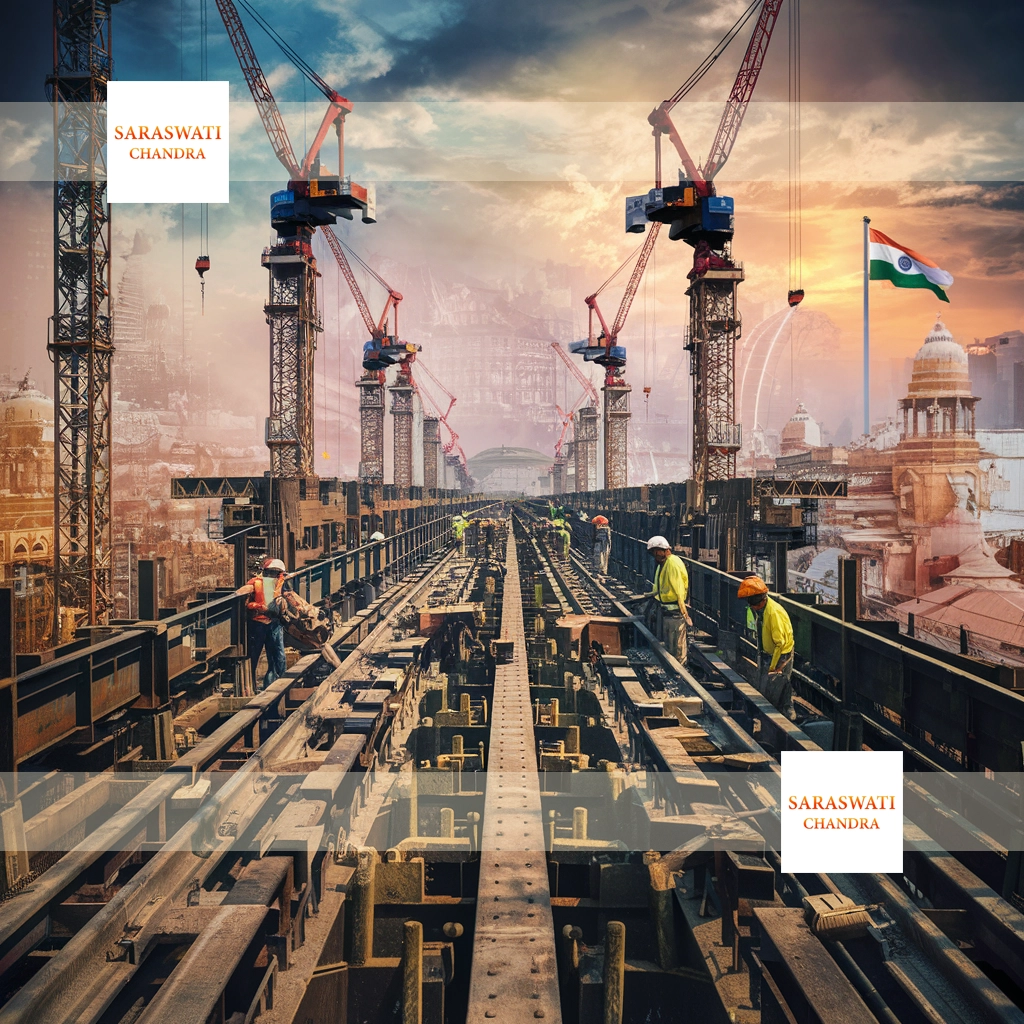Design Specifications for Delhi Metro Phase-IV
Superstructure System of Viaduct: Key Considerations
The Delhi Metro Phase-IV project incorporates a variety of structural designs to accommodate complex urban infrastructure needs. The superstructure of the viaduct mainly uses simply supported Twin U-Girders. For sharp curves, crossovers, railways, or highway crossings, alternative designs like PSC I-Girders, Balanced Cantilevers, Steel Composite Girders, or Steel Trusses might be utilized. Adhere to Clause 16.9.6 of IRS-CBC for minimum dimensions. Ensure the design aligns with the construction methodology adopted by DMRC.
Drainage Design: The viaduct deck drainage system must handle maximum rainfall intensity. Implement suitable longitudinal and transverse slopes as specified in Clauses 10.4.1.1 & 15.2.2 of IRS-CBC. The deck’s top soffit slab should be profiled to facilitate effective runoff water collection, employing a cross slope of 2.5% and appropriate drainage pipes.
Bearing System and Its Design Methodology
Bearing System: To ensure stability under normal and seismic conditions, adopt elastomeric bearings for vertical and in-plane force transfer. These bearings will not account for seismic forces, which will be managed by shear keys or seismic restrainers. POT-PTFE bearings should follow IRC: 83 Part-III guidelines, while spherical bearings adhere to IRC: 83 Part-IV. Design elastomeric bearings according to EN 1337 parts 1 and 3.
Replaceability of Bearings: Design the bearing system with future accessibility and replacement in mind, as bearings generally have a shorter lifespan than the structure. Ensure that all bearings and pier caps allow for future replacement and that jacks can be used for maintenance as per Clause 15.9.11.3 of IRS-CBC. Employ Special Low Height jacks if vertical clearance is less than 400 mm, following Clause 15.9.11.4 of IRS-CBC.
Uplift Prevention: To prevent deck overturning, integrate a holding-down device between the deck and pier head. This device may be part of the pot-bearing system or a separate system with bars embedded in the pier cap and viaduct, allowing for translation and rotation. Follow the latest international practices for design criteria, as Indian codes lack specific guidelines.
Substructure System Design
Pier Cap: Design the pier cap as a corbel in accordance with Clause 17.2.3 of IRS-CBC. If the shear span-to-depth ratio exceeds 0.6, design the pier cap as a flexural member. Maintain the pedestal height between 150 mm and 500 mm, as outlined in Clause 710.10.2 of IRC: 78. Ensure the pier cap shape accommodates various superstructure types.
Piers: For cantilever piers, use the effective length for slenderness ratio calculations from Table-18 of IRS-CBC. Employ ductile detailing. Most columns in this project are isolated with elastomeric bearings. For longitudinal and transverse directions, use 2.3L0 and 1.5L0, respectively, where L0 represents the height from the footing slab to the pier cap. Design piers following Clause 15.6 of IRS-CBC.
Prestressed Cantilever Piers: Provide minimum longitudinal reinforcement as per Clause 15.9.4.1 of IRS-CBC and ensure shear reinforcement and ductile detailing. Columns should remain in compression under all Service Limit State (SLS) combinations. Apply Clause 16.6.1 of IRS-CBC for prestressed piers.
Foundation System
General Foundation Design: Design foundations according to IRS Bridge Substructure & Foundation Code, IRS Concrete Bridge Code, IRC-78, and IS-2911.
Pile Foundation: Adopt bored-cast-in-situ piles with a minimum diameter of 1.0m, unless specified otherwise. Each pile cap must have at least four piles. Consider open foundations for piers on rocky strata. Follow IRS-CBC and IS: 2911 for pile and pile cap design, including load combinations and lateral load capacity.
Soil Structure Analysis: Evaluate soil stiffness and parameters based on Clause 5.7 of the DBR and the design groundwater table as per Clause 5.5 of the DBR.
Well Foundation & Open Foundation: Design well and open foundations as per IRS Bridge Substructure & Foundation Code and IRC: 78.
Codal Preferences
Follow IRS Codes in principle, with additional guidance from UIC Codes, Euro Codes, and relevant international codes if necessary. For railway loading issues, prioritize UIC Codes and Euro Codes, and for other design and detailing issues, refer to IS, IRC, EURO, AASHTO, and any international codes approved by DMRC.

[…] reinforcement is a valuable technology for enhancing crack control and durability in concrete construction. By […]
[…] the Phase-IV expansion. “>The Delhi Metro Rail Corporation Ltd. (DMRC) outlines comprehensive design specifications for the Phase-IV expansion. This document details critical aspects such as track geometry, track […]
[…] studs come in various types, each designed for specific […]
[…] markings designate specific road […]
[…] its scale, sustainability was a key focus in the Burj Khalifa’s design and […]
[…] was a key consideration during the design and construction of SDB. The building is equipped with energy-efficient lighting, extensive solar […]